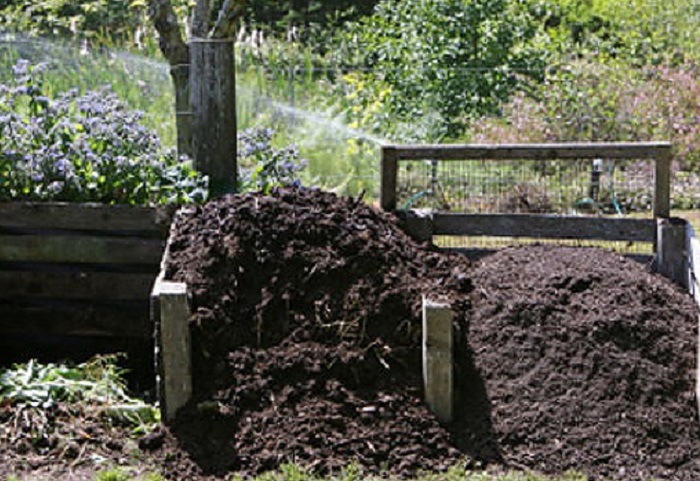 Humus - These are manure subjected to rotting and bacterial treatment, bird droppings, plant debris. Simply put, humus is an organic fertilizer obtained from rotted manure and plant debris.
Humus - These are manure subjected to rotting and bacterial treatment, bird droppings, plant debris. Simply put, humus is an organic fertilizer obtained from rotted manure and plant debris.
Fertilizers are necessary for garden soil for nutrition and a good harvest, to improve crop rotation.
Most use top dressing with both mineral and organic fertilizers, giving the latter a large share.
Content
Peregoi - description
The stage of maturation of humus goes through several stages. Readiness can be determined by the following parameters:
- friability;
- flowability;
- uniformity of structure;
- brownish color;
- lack of ammonia and putrefactive odor;
- the weight of humus in a 10-liter bucket is about 6 kg (overdried weighs much less, and immature - more).
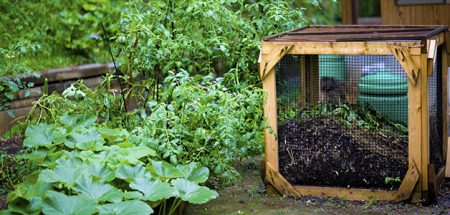
Agrotechnical properties of humus:
- Such a quality as friability allows moisture to be absorbed well and retained in the soil for a long time, retain air (necessary for the roots).
- In sandy soil, after application of humus, moisture is retained longer, and humus makes heavy soil more loose and nutritious.
- It improves the structure of the soil - the capillary crust is not formed in normal weather, and easily grows loose in hot weather.
- When fertilizing with mineral fertilizers, it contributes to their delivery to plants.
- The nutrients in the composition of humus allow not to feed the plants during the season (except when some specific substance is needed to feed the plant).
- It improves the gas nutrition of plants due to the large amount of carbon dioxide in bound form.
- The use of humus makes it possible to carry out soil restoration less frequently.
- Attracts earthworms, and scares moles.
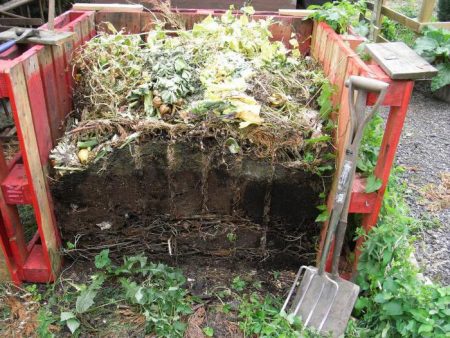
- In the mulch from humus, slugs and harmful insects do not live, which is observed in plant mulch, and it, unlike mineral mulch, does not violate the metabolism in the soil.
- Does not burn plant roots.
Composition of humus
The amount and composition of nutrients in humus depends on the starting substance, but total composition same:
- organic matter;
- water;
- nitrogen (total);
- potassium;
- calcium;
- phosphorus.
All these substances are necessary for the root system, setting, formation and development of fruits, plant growth.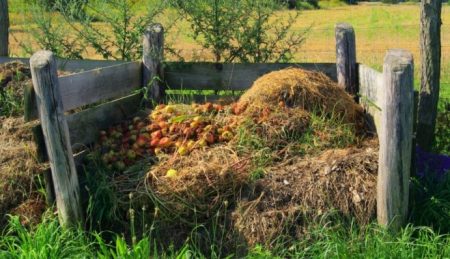
Distemper do it yourself
You can cook humus yourself. The cooking process is not complicated, does not require financial investments and a lot of time, and the source material, which is important, is always in the garden.
Out of grass
One of the problems on the site is the disposal of weeds, mowed grass, leaves. The use of such waste for the preparation of humus, an excellent organic fertilizer, will help to solve it.
High-quality humus is obtained from mixtures: fresh grass (the main component), leaf mixture, weedy plants with roots, dry grass, bark, sawdust, the remains of vegetables and fruits, ash, manure, additives to speed up fermentation.
It is unacceptable that any feces, chemicals, weed seeds, food of animal origin, infected plants, and non-decomposing components get into the mass. Otherwise, humus will turn out with an unpleasant odor and poor quality.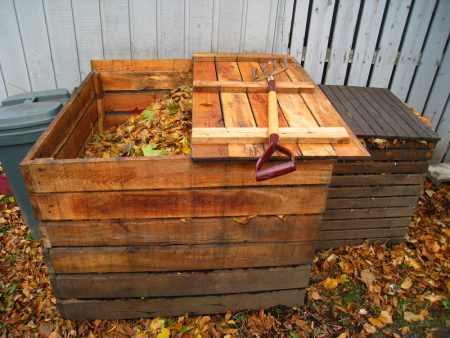
Box for making humus:
- made from boards;
- large volume;
- one wall is removable (for convenience of excavation);
- in the bottom with holes for draining moisture;
- the upper part - pieces of slate, cellophane, ruberoid.
Cooking:
- Put ready-made humus or sawdust at the bottom of the box. In sawdust, you need to add funds with bacteria (for fermentation).
- Put the box in a dark place.
- It is better to chop the grass (you can shovel).
- Gradually fill the box, mix the contents, moisturize. Then mix the mixture periodically.
- Sprinkle grass with soil or sawdust.
- Do not allow the mass to dry out.
Instead of a box, if the area allows, you can use a pit whose walls are sewn with slate or film, but be sure to leave gaps for air circulation.
For the winter, cover the box (pit) with straw, hay, rags from above, and open it in the spring, using cover material for a new batch of humus.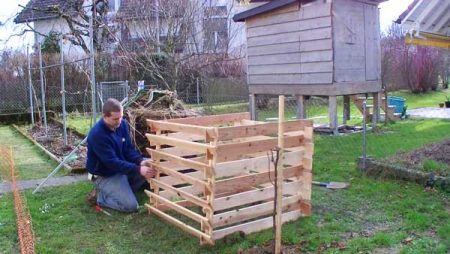
The whole process can last in different ways: from 3 months to 3 years.
Special additives for fermentation will help speed up the process.
From manure
To prepare humus from manure should:
- take a special place that is not blown by northerly winds, preferably near the fence (manure does not freeze for a long time and bacteria are active for a longer period);
- not a very large amount of manure is placed in the structure, the walls of which have openings for the passage of air (one wall is removable), the upper part opens (pieces of slate, film, panels, roofing material);
- it is mandatory to close the top so that the mass of manure is not washed through with water (if the holes in the coating are small, it’s not scary);
- in the warm period, manure is mixed with a pitchfork and slightly moistened;
- for accelerated ripening, use the preparations "Baikal", "Northern Lights-3" and others;
- if there is a lot of manure, then they pile it up, choosing the not too sunny and windy part of the garden plot, close it from above (make holes in the cover).
The ripening period of humus is from one and a half to two years.
Ready when the mass is uniform in consistency, loose and loose, dark brown.
Deciduous humus
The leaves on the site are often burned, forgetting that this is a good material for high-quality deciduous humus.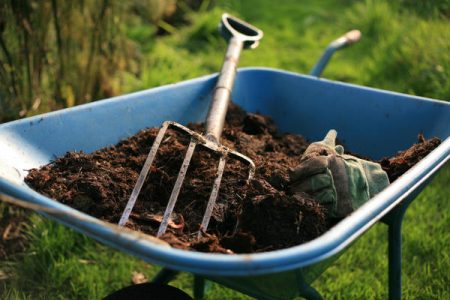
Advantages of humus from leaves:
- free stuff;
- always at hand;
- almost no heat is required for cooking;
- holds moisture well near the root system of the plant;
- suitable for garden compost;
- good option for mulch;
- can be made from any foliage.
Oak, chestnut and beech leaves contain tannins that negatively affect the root system, so they are not suitable for the formation of humus.
The needles decompose for 3 years, it is better to chop it.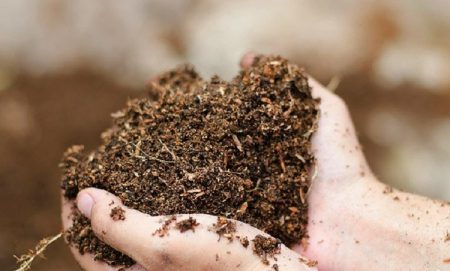
Capacities for preparation of deciduous humus:
- specially prepared construction: in the corners of the plot, with an area of 1 m², thick stakes or poles are driven in, fitted with a net (netting);
- dense plastic bags (puncture them in several places for moisture to enter);
- large plastic containers (for example, a leaky barrel).
How to cook:
- the foliage is poured into the prepared containers, well-packed and moistened.
- the cooking process requires the presence of moisture - the containers can be left in the open air (if necessary, moisturize by yourself);
- the cooking process lasts 2-3 years;
- it will speed up the process of grinding leaves, adding nitrogen (it is possible in the form of mowed clover, nettle, peas), moisture and partial shade (less evaporation).
Leaves raked in late autumn do not need to be watered, otherwise in the spring the thawing process will take a long time.
How to use humus
All cultures need organics as a fertilizer containing the necessary components for normal growth, flowering and fruiting.
Variants of application of humus:
- in autumn, a 10-liter bucket of humus, superphosphate (1-2 tbsp), fertilizer with phosphorus and potassium (2 tbsp), ash (2 cups) are added to 1 m² of area; in spring - from two to four buckets per 1 m²;
- preparation of a mixture for seedlings (1/2 part of peat, compost, garden soil and ½ part of humus);
- the use of a small amount of humus when planting nasturtium, cosmea, eschscholzia, ageratum (the plant goes into the foliage with a large amount);
- fertilizer in the spring of pumpkins, zucchini, cucumbers by applying to the soil (15cm) when digging;
- crumbles under strawberries (5cm layer), pour sawdust and straw on top so that there is no contact with the ground;
- It is made under raspberries with a layer of 5 cm and is not covered;
- added to the soil for indoor plants (a third or a quarter of the total volume);
- greenhouse soil fertilizer (1st year - 40-70kg per 1 m², in the future - 15-30kg per 1 m²);
- used as the main component of liquid fertilizers.
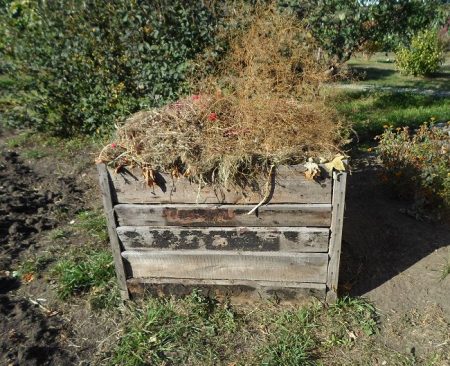
The method of preparation of liquid fertilizer from humus
Fill a container (200 l) with humus (manure, compost), add weeds, weathered grass, pour water to the brim and tie with a dark film. The mixture is ready in 2 weeks. Apply for watering plants under a bush (2 liters) with a solution of 10 liters of water and 1-2 liters of the mixture.
How to store humus in the country
Gardeners - gardeners not only grow vegetables and fruits, but also try to give the site a beautiful look so that the garden brings, in addition to benefits, also aesthetic pleasure.
Heaps of manure and humus do not look very beautiful, so you need to look for options for their storage more aesthetic in appearance.
For example:
- put humus in old barrels, containers, boxes, close them and put them on the fence for bushes, trees;
- if it is not possible to hide barrels behind bushes, you can put flowerpots with ampelous plants or containers with some garden crops on them;
- storing humus in heaps presupposes obligatory shelter with its film (heap can be planted around the perimeter with tall flowers, it will not be evident);
- you can cover the heaps with a colored film - this will add decorativeness to the site;
- use large plastic bags and put them in a secluded place.
Reviews
Ruslan (Peter)
I bought a car of 10-year-old manure - it's just super - there was black soil. Zucchini is just a pearl on it.
No name answered the question: "How to distinguish humus from peat?": - In humus there are the remains of dry plants. And the color is closer to ordinary land. There are few residues in peat and the color is from black to brown. Plus friability. And lumps of peat float on the water, do not drown.
Valentine answered the question: “I plan to make humus or dung in the autumn for digging in all the beds. The soil is heavy clay. Will it be okay? ”: - Humus and manure are different fertilizers. Manure is best applied in the fall, humus in the spring.

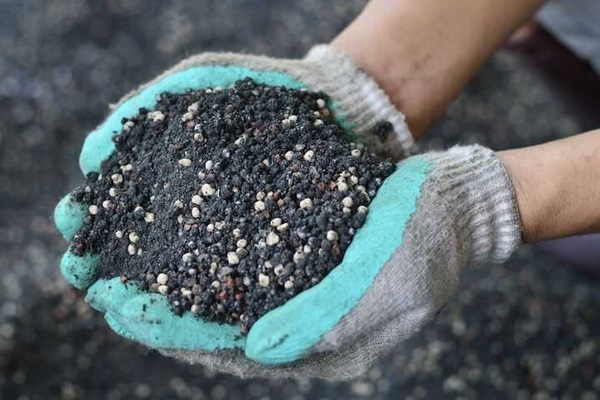
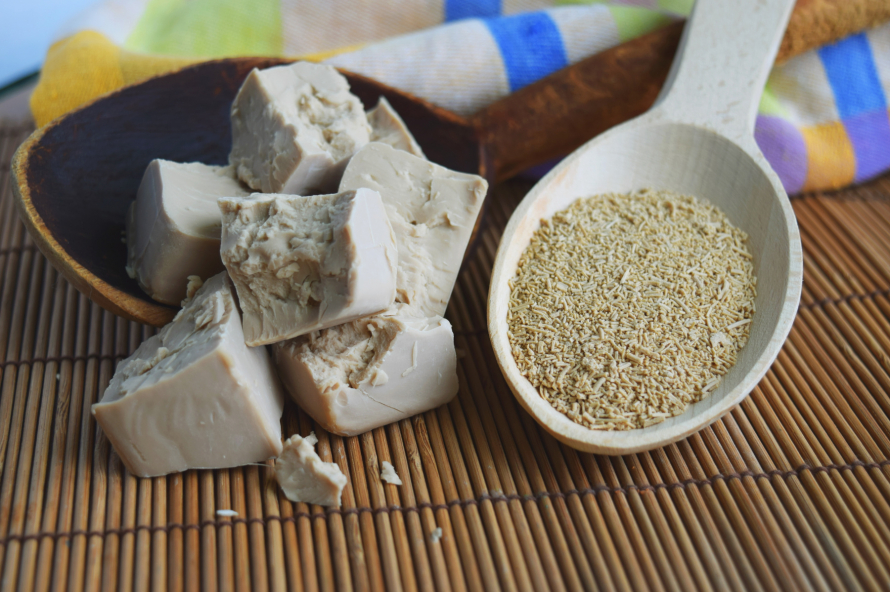
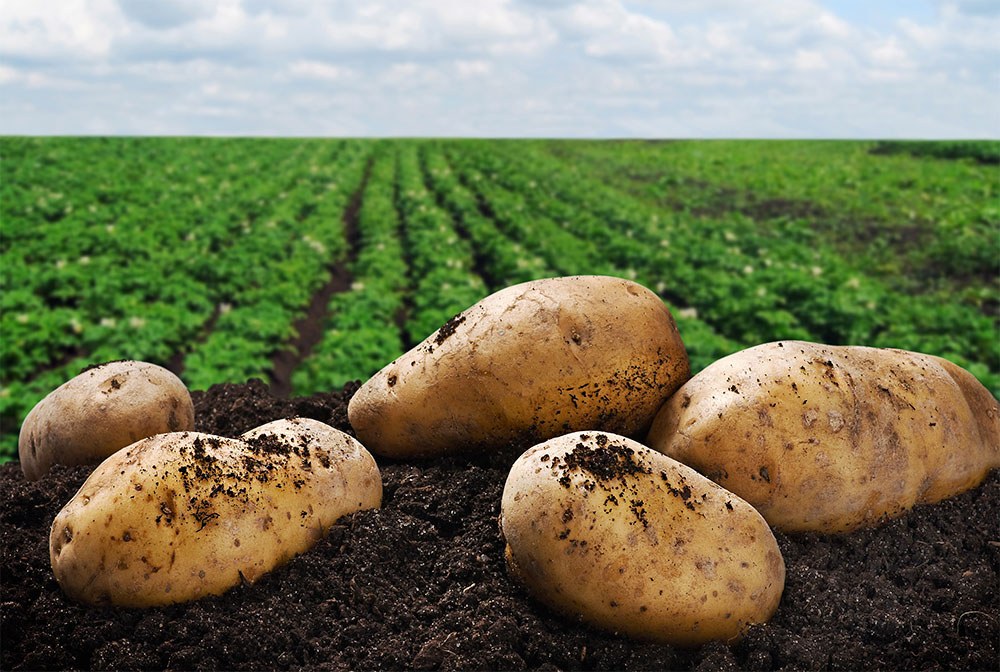
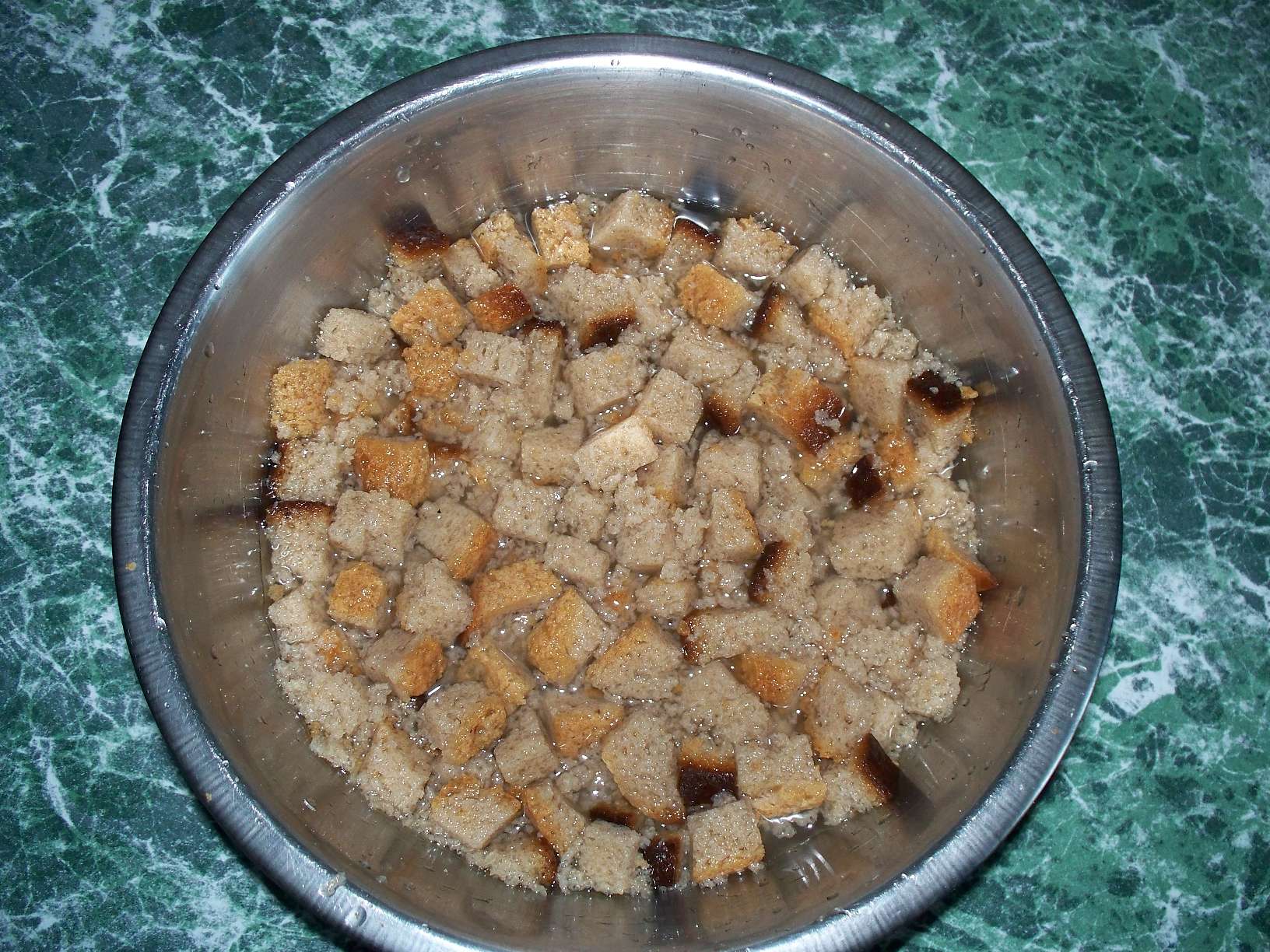 How to make bread infusion for feeding cucumbers
How to make bread infusion for feeding cucumbers Superphosphate: what is it and how to apply it
Superphosphate: what is it and how to apply it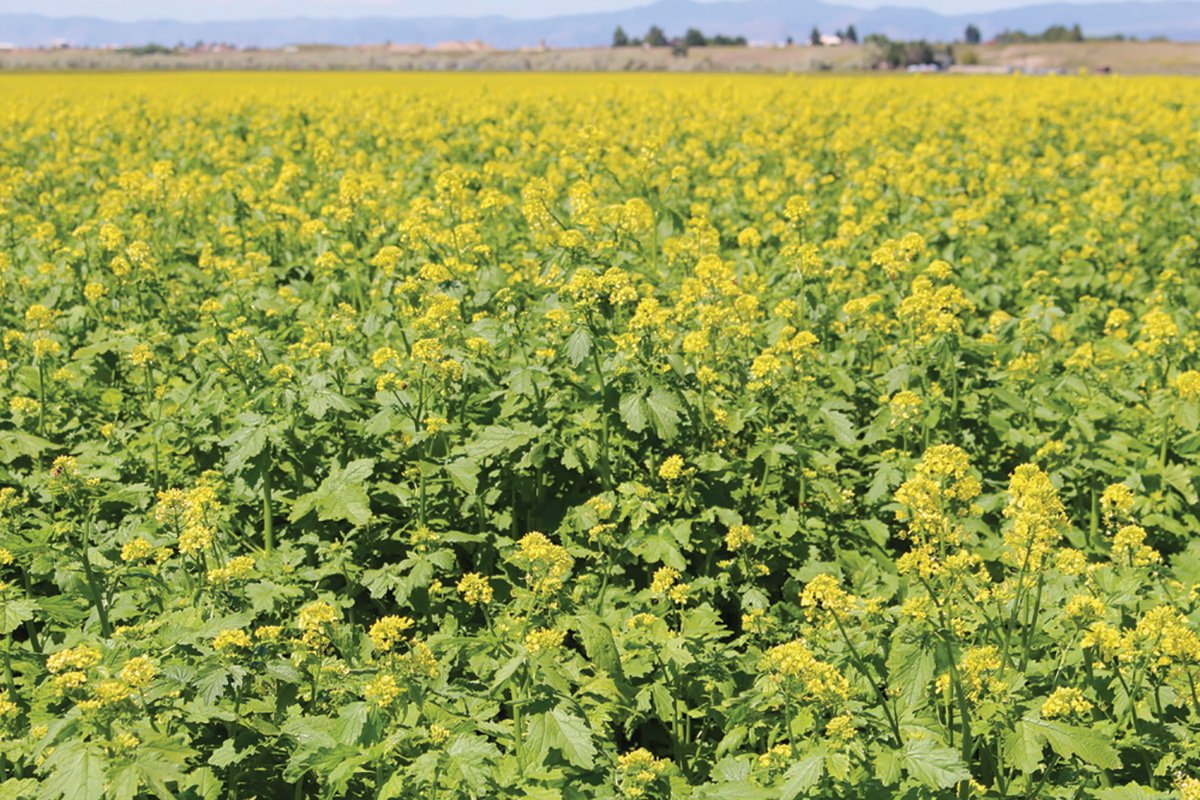 What problems can be expected from siderats?
What problems can be expected from siderats?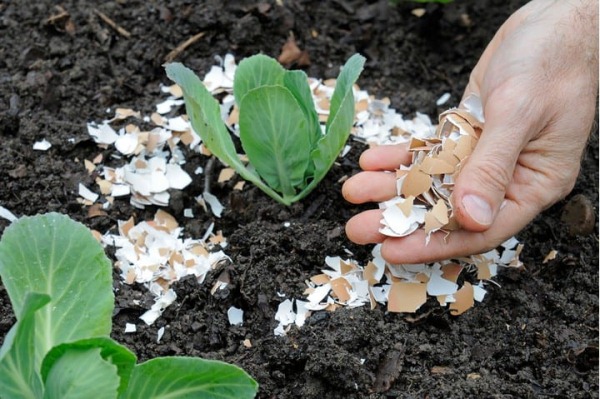 Secrets of the collection, storage and use of eggshells in the garden
Secrets of the collection, storage and use of eggshells in the garden